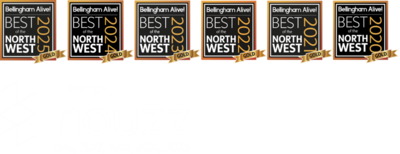

August 1, 2023

Whether you’re building a custom home or taking on a major remodel or addition, perhaps the most important decision you will make is who will be on your team, guiding you through this journey to make it successful. Who will design your project? Who will build it? We find people are happiest when they have one answer to both of those questions. Say hello to the design-build model.
When Highline started in 2011, we were a small construction company. We worked hard to offer meaningful employment and exceed our clients’ expectations. However, we found we were repeatedly running into obstacles that made it challenging to meet those goals. A huge part of satisfying our field staff and our clients stemmed from having a smooth communication process with solid architectural plans that were feasible within the respective project budgets while truly meeting the clients’ needs. So, in 2020, we hired our in-house architect and officially became a design-build firm.
Design-build is different than the more historically traditional design-bid-build model. In design-bid-build, a client hires an architect or architectural designer to draft plans. The client then puts the plans out to several different construction companies for bid to select their builder. On the contrary, in design-build, the client hires one company to both design and build their project.
We do still take select projects from external architects and designers and have a few we particularly trust and work with repeatedly. However, we can’t emphasize enough how rewarding it is to see a smooth process from start to finish when we take a complete design-build approach. We’ve summarized some of the greatest benefits of the design-build model below.
In a design-build model, clients feel exceptionally supported. When one company is tasked with making the project a success from start to finish, any barriers encountered are resolved in a positive, solution-oriented, and client-centered way. The designer can’t blame the builder and vice versa, because, in design-build, the designer and the builder are co-workers on the same team. The client is never put in the middle of an accountability battle. The client is able to share their goals and needs with one company and not have to worry those needs will be lost in translation when moving from designer to builder. Our design team also includes an interior designer, which, in other instances, could translate to yet a third party in the equation. At Highline, architecture, interior design, and construction are all part of the package and the client is never put in the middle mediating between two or three different parties.
“Most important to our satisfaction were Highline’s dedication to accommodating our needs and preferences and their clear, honest communication through the entire project,” said Highline Design-Build Client Scott Henderson. Perhaps this is why 61% of our business came from referrals last year.
Design-Build Data Sourcebook claims design-build projects have 3.8% less cost growth than design-bid-build projects. Our guess is it the difference could be even greater than that. Don’t get us wrong; we assume every design firm is well-intentioned. However, it takes an experienced builder to do an accurate cost analysis for a project. In the design-build model, transparency around the budget is established early on and conversations regarding the true cost to build are used to inform the design process. On the other hand, in a design-bid-build model, an architect or architectural designer is being paid to put together a design that will hopefully meet the client’s budget without any first-hand knowledge of building costs. This leaves room for the client to pay for their dream design only to find that every builder they talk to estimates the project at considerably higher construction costs than the client had budgeted for. In worst-case scenarios, the client may have to pay additional design fees to have their project modified, may have to abandon their project entirely because there wasn’t anyone present to advise on the true costs of construction, or may get suckered into a bait-and-switch scenario by contracting with the builder who presented the lowest estimate only to find the estimate was highly inaccurate and the budget gets blown mid-way through construction.
“The attention to detail, thoughtful communication, and knowledgeable and skilled team members made us feel extremely well taken care of,” said Highline Client Jennifer Johnson when reflecting on the process of having the design and build teams both involved from the start of her project.
Imagine receiving the final draft of your designs from your architect. You’re excited and looking forward to breaking ground on your new project as soon as possible. Then you talk to your carefully curated list of reputable builders only to find every single one is booked a year out. Not only is this a huge emotional disappointment, but it can add financial burden. If you sold your previous property to finance this new one, you may be looking at renting a year longer than expected. The design-build process avoids all of this. At Highline, we’re clear on our timelines upfront. When your project goes into design, we put your project into our construction calendar at the same time. We allow ourselves the time needed to plan and permit your project and make sure we’re staffed up on our construction side to break ground as soon as the design and permitting is complete.
Furthermore, since cost analysis with our construction project managers took place in conjunction with the design process, we know we have a financially feasible project at the end of the design phase, which minimizes the need for change orders which can create significant delays.
According to the Design-Build Data Sourcebook, design-build projects are completed 102% faster than design-bid-build projects. 102%! That’s more than twice as fast! That seems a bit generous towards Camp Design-Build, but it’s still a good indicator that design-build will get you into your dream home sooner. Though we haven’t seen the raw data behind this claim, we have to assume it is in reference to an increase in speed from the start of planning through construction, not of construction alone.
For Highline, going design-build just made sense. We value relationships, honesty, and transparency. We care about clients reaching their goals, and we care about continually growing a successful and sustainable business that operates efficiently and gets continuous referrals. If this sounds like the right fit for you, you’re not alone. It’s predicted design-build projects will account for nearly half of all construction spending by 2025.
We’re really proud of the design-build team we’ve built at Highline. Give us a call and see for yourself what makes design-build different and what makes Highline special.


– Matt Whitten, Bellingham, WA